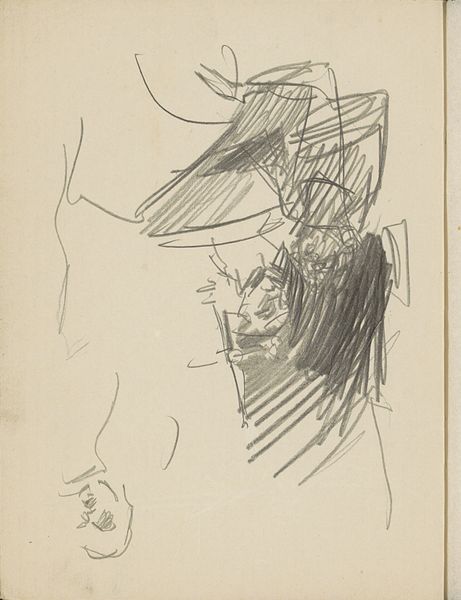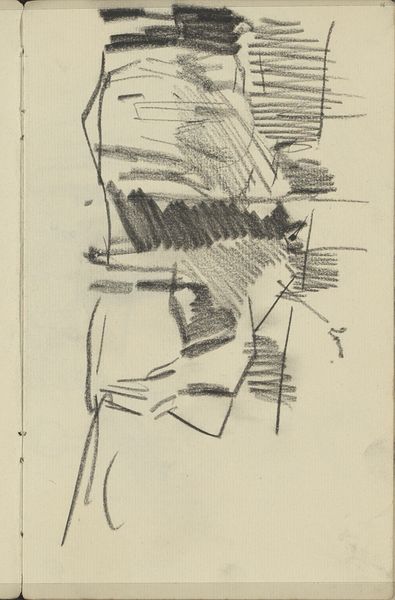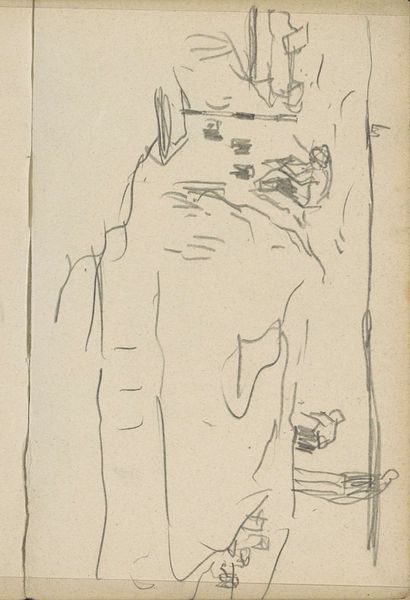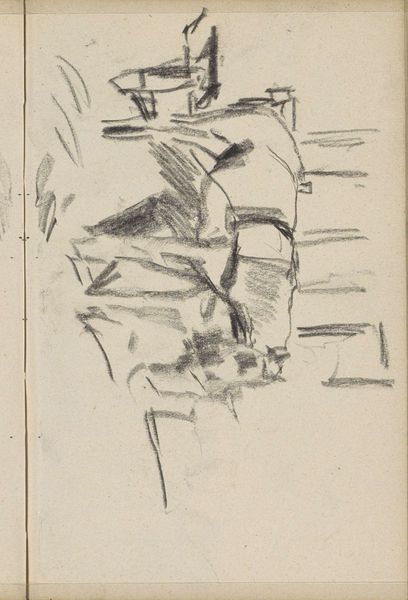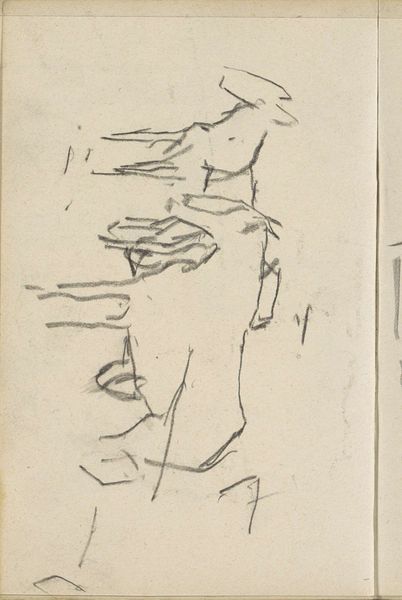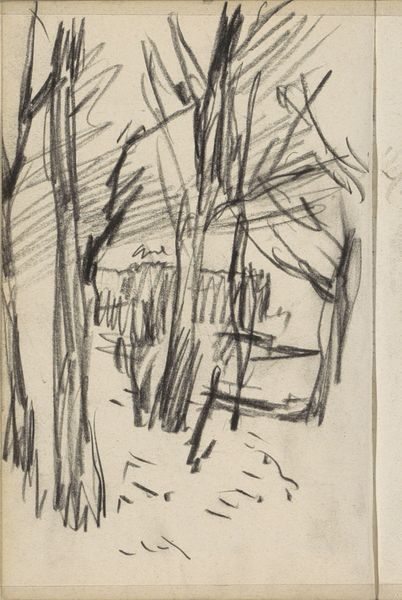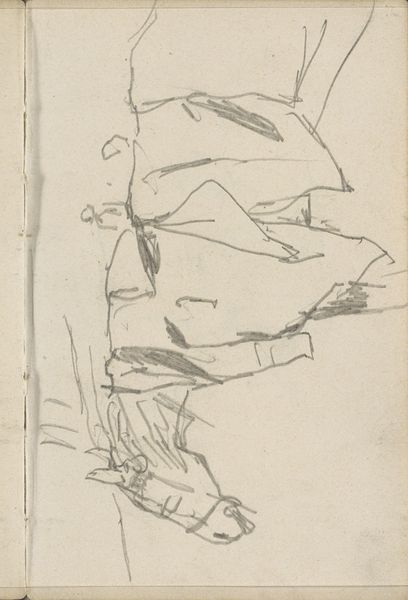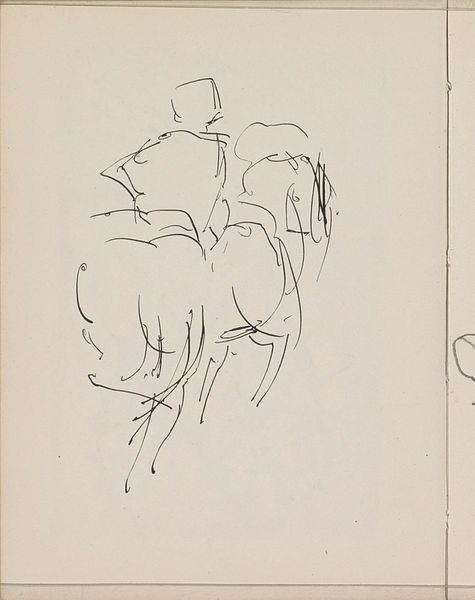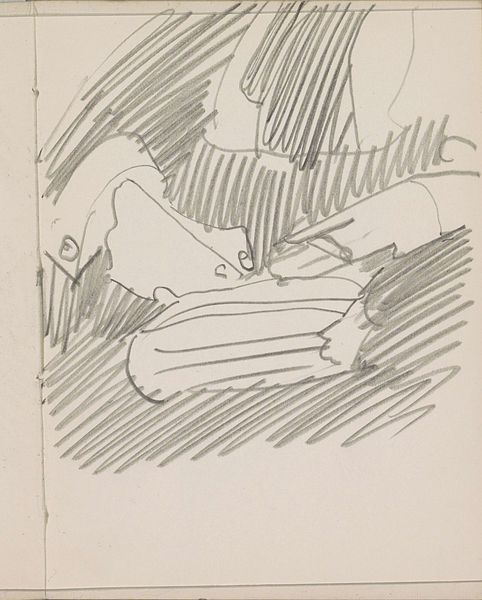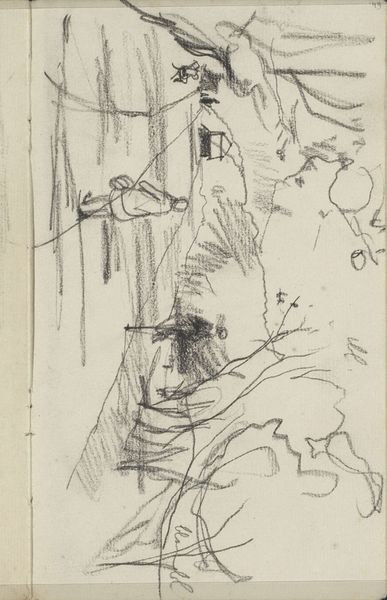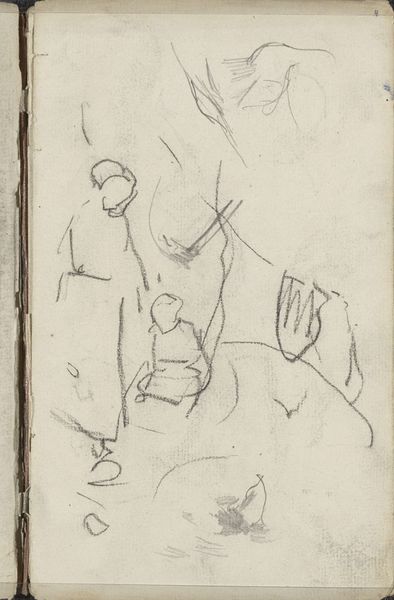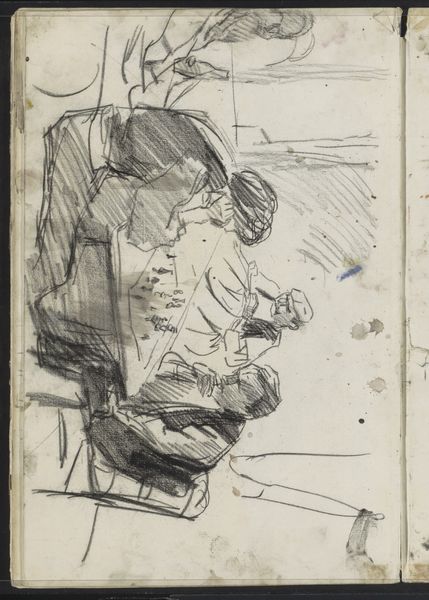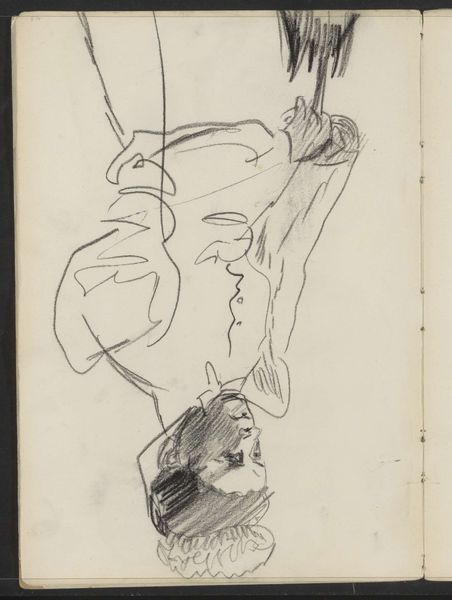
drawing, ink, pen
#
portrait
#
drawing
#
comic strip sketch
#
pen sketch
#
figuration
#
personal sketchbook
#
ink
#
sketchwork
#
ink drawing experimentation
#
pen-ink sketch
#
pen work
#
sketchbook drawing
#
pen
#
storyboard and sketchbook work
#
sketchbook art
#
modernism
Copyright: Rijks Museum: Open Domain
Curator: This is "Man zittend met zijn hand achter het hoofd," a pen and ink drawing by Reijer Stolk, created in 1919. It currently resides in the Rijksmuseum collection. Editor: Well, that's certainly... energetic. The stark black lines create a very restless feeling, almost frantic. It looks more like an emotional outburst than a studied portrait. Curator: Indeed. Consider that this work was produced just after the close of World War I. Artists grappled with the widespread trauma, and the breakdown of traditional social structures led to new forms of artistic expression—a search for authenticity, even rawness, in the face of societal upheaval. Sketchbooks offered a safe space to record a private reality. Editor: I see your point. There’s a very clear sense of immediacy here. The hatching and cross-hatching – look how aggressively the ink is applied – it seems to indicate not just shading, but a kind of internal turbulence. Curator: Exactly! While this particular drawing hasn't been tied directly to a specific historical event or trauma in Stolk’s life, it resonates with that broader sentiment of postwar unease. Furthermore, this type of sketch was not typically intended for public consumption. It was, in a sense, pure and unadulterated. Editor: You can tell by how the figure is positioned, head in hand. There is very little attention paid to the contours, and instead the artist is trying to evoke some inner state. This piece seems deliberately unfinished and exposed. Curator: And by displaying works such as this one, museums are democratizing the art historical record to reflect society. Previously ignored works of art gain increasing relevance. Editor: It’s certainly effective. It prompts you to question your assumptions about what a portrait is supposed to communicate. It shows emotion that perhaps a formal commissioned piece would intentionally obscure. Curator: Yes, Stolk's sketch challenges notions of idealized representation, reflecting an honesty often absent in more polished works. Editor: I'll be pondering this one. The chaotic line work makes a much bolder statement about the inner experience of a person than more controlled drawings often do. Curator: It makes me reconsider the role of museums in making art and history available to wider audiences, which enriches us all.
Comments
No comments
Be the first to comment and join the conversation on the ultimate creative platform.
